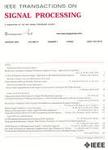版权所有:内蒙古大学图书馆 技术提供:维普资讯• 智图
内蒙古自治区呼和浩特市赛罕区大学西街235号 邮编: 010021

作者机构:Indian Inst Technol IIT Bombay Dept Elect Engn Mumbai 400076 India Natl Atmospher Res Lab NARL Gadanki 517112 India
出 版 物:《IEEE TRANSACTIONS ON SIGNAL PROCESSING》 (IEEE Trans Signal Process)
年 卷 期:2024年第72卷
页 面:2467-2482页
核心收录:
主 题:Frequency selective ESPRIT subspace method data association target tracking multi sensor association Doppler radar radar signal processing
摘 要:We consider the problem of tracking the velocity profile of a target or phenomenon, which is distributed across its range, such as atmospheric wind velocity across altitudes from radar measurements. Typical pulsed radars apply spectral techniques on the matched filtered samples collected from the return echoes at each range bin. Both the true signal as well as the false targets can lead to prominent peaks in the spectral domain, and the recovery algorithms should identify the true profile across range bins. When the measurements in adjacent range bins are correlated, a dynamic program-based data association turns out to be highly suitable. This algorithm is popularly known as the Viterbi Data Association (VDA). While VDA has good performance when the true signal is present along with a small number of competing false spectral peaks in each range bin, poor SNRs from high altitude reflections may trigger several false peaks, considerably deteriorating the performance of the VDA. The main contribution of the current paper is in incorporating frequency domain subspace methods (in particular, Frequency selective ESPRIT) to iteratively refine the measurements such that the VDA can further improve the best-identified track so far. When data from multiple sensors are available, the proposed Iterative VDA (IVDA) algorithm can be further reinforced using multi-sensor fusion techniques, which we call the Reinforced IVDA. Both of the proposed algorithms demonstrate significant performance improvements in estimating target velocity at altitudes with low SNRs. In addition to simulations, the proposed algorithms are validated on field data collected from a Mesosphere Stratosphere Troposphere (MST) wind profiling radar.